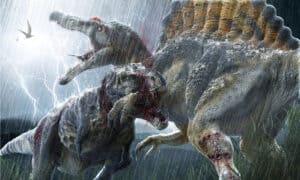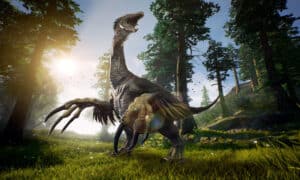There are around 700 species of dinosaurs that we know of and have given suitable names. We all know the common ones: triceratops, tyrannosaurus rex, and velociraptors to name a few. But how many dinosaurs can you name that start with a Q? Below you’ll find a comprehensive list of all 11 species of dinosaurs starting with this uncommon letter.
1. Qantassaurus

A unique feature of the Qantassaurus is its short lower jaw.
©Zhanna Barada/ via Getty Images
The Qantassaurus (Qantassaurus intrepidus) appears to be a dinosaur from the Early Cretaceous. The name comes from an Australian airline Qantas. It is an Australian ornithopod. Only the fossils of the lower jaw and teeth have been recovered from this species.
This small dino most likely was an herbivore, preferring the few species of plants available at this time such as Equisetum (horsetails) and ferns.
2. Qianzhousaurus
The Qianzhousaurus (Qianzhousaurus sinensis) is a type of tyrannosaurid that lived in Asia during the Late Cretaceous Period. This species, along with three others, are in their own group (or clade) Alioramini which has characteristics that include extensive ornamentation about their snout surface and long, beak-like snouts. The name is a description of where the fossils were located. Qianzhou is a name common in ancient Ganzhou where the fossils were first discovered. Sinensis means literally, from China.
3. Qiaowanlong
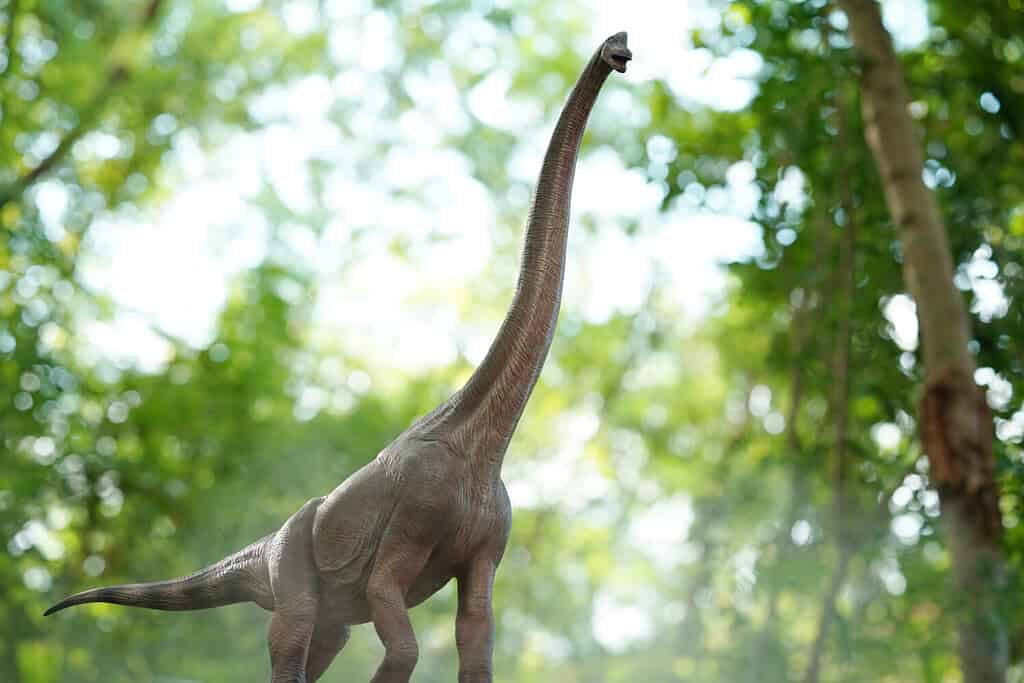
The Qiaowanlong likely looks like other long-necked dinosaurs, such as a brachiosaurus.
©Mercury Green/Shutterstock.com
This dinosaur is a relatively recent discovery from 2009 and hails also from the Early Cretaceous. The paleontologists who found these dino’s fossils did so in the Yujungzi Basin in China. Like the more famous Brachiosaurus, Qiaowanlong (Qiaowanlong kangxii) has a long neck and might have been nearly 40 feet in length. The name refers to a relic near its discovery Qiaowan and -long referring to “dragon” in Chinese. Kangxi is an emperor of the Qing Dynasty.
Qiaowanlong’s discovery is thanks to the preservation of eight cervical vertebrae, leading to its initial classification as a brachiosaurid. However, as future researchers went further into comparing the fossils of this dino to other brachiosaurids, there was some doubt. So, there’s the possibility that Qiaowanlong’s lineage is not known for sure, as researchers speculate it might be part of the somphospondyli clade.
4. Qijianglong
Here’s another long-necked dinosaur, the Qijianglong or Qijianglong guokr. Its name means Dragon of Qijiang, paying homage to its origin of discovery and long neck. This species was found in rocks from the Upper Jurassic epoch. What made this dinosaur stand out was its extremely long neck. Despite its size (around 30 feet for just the neck), the neck was lightweight and mobile. However, due to the length of the neck, its function was primarily in vertical movement rather than sideways.
5. Qingxiusaurus
The Qingxiusaurus (Qingxiusaurus youjiangensis) is yet another herbivorous dinosaur in the sauropod family. The name, in short, refers to the picturesque scenery of mountains and water in Guangxi. It’s also from the Late Cretaceous Period and originates in China. Unfortunately, due to the scant amount of fossils available, it’s difficult to determine the size of this sauropod.
6. Qinlingosaurus
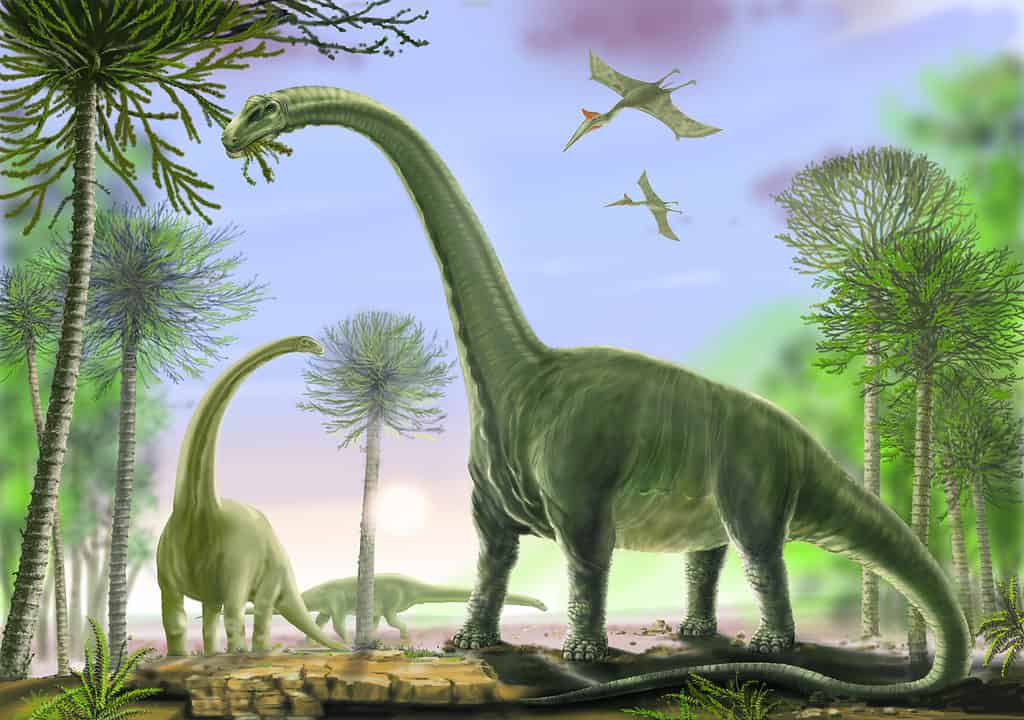
Though not much is known of this species, it’s assumed to be a
titanosaur
.
©David Roland/Shutterstock.com
Another dinosaur whose name starts with Q is the Qinlingosaurus (Qinlingosaurus luonanensis). Its name draws inspiration from the Qinling Mountains in China. This herbivorous dinosaur is likely from the Late Cretaceous. It is also a sauropod, looking very much like other dinosaurs of the group with long necks and thick bodies. Only a few pieces of its hip bones and vertebrae were found at the dig site.
7. Qiupalong
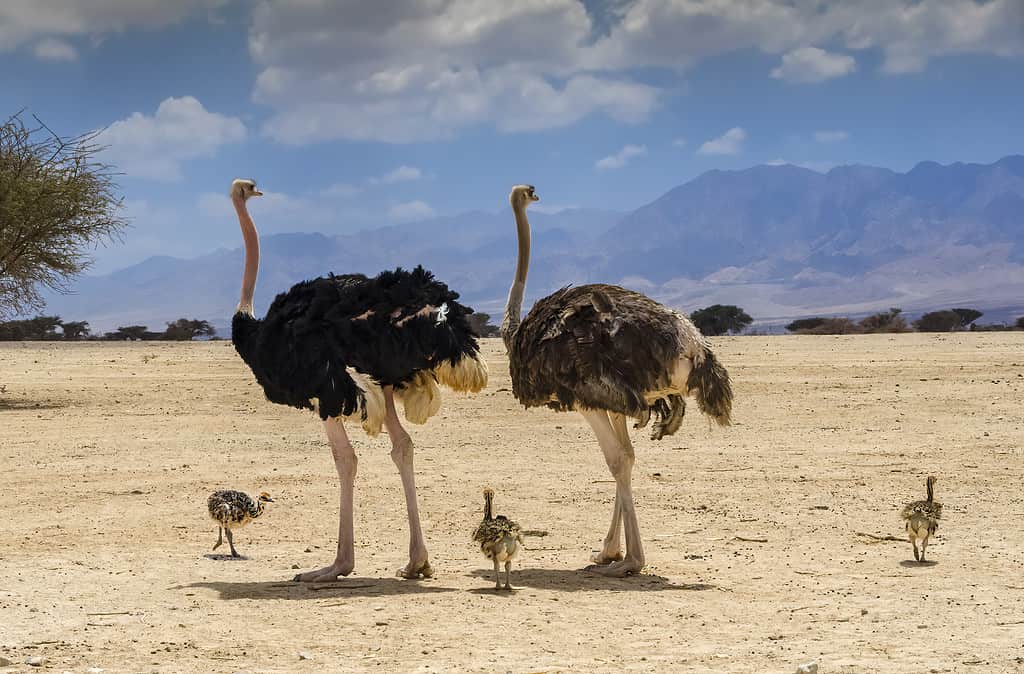
It’s possible the Quipalong looked like an ostrich and a raptor put together.
©gorsh13/iStock via Getty Images
Interestingly, Qiupalong (Qiupalong henanensis) is often depicted as an ostrich-like dinosaur. Its name translates to “Qiupa dragon” using the Qiupa formation and Henan province to attribute the location of the fossil’s origin. The pelvis along with some leg and toe bones would give scientists an idea of the appearance of this odd ornithomimid. Similar fossils have also been seen in North America.
8. Qiupanykus
An uncommon classification for the Q name dinosaur: alvarezsaurid! Qiupanykus (Qiupanykus zhangi) is also from the Henan Province and the Late Cretaceous. The name zhangi refers to another scientist, Shuancheng Zhang, for his help in uncovering the fossils (also from the Qiupa formation, like Qiupalong).
This specimen’s fossils indicate they may have preyed upon eggs for food, as some egg fragments were found in association with the skeleton.
9. Quaesitosaurus
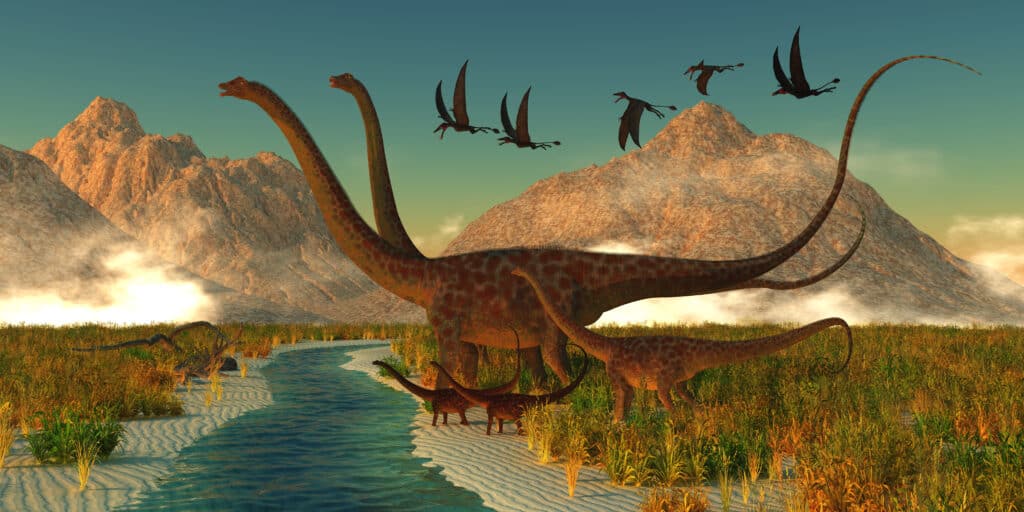
From fossil evidence of the skull, Quaesitosaurus likely looks like a
Diplodocus
.
©Catmando/Shutterstock.com
This herbivorous dinosaur lived in the Late Cretaceous, along with many other species on this list. There is not much known about Quaesitosaurus (Quaseitosaurus orientalis) as the only fossil from this dinosaur is a partial skull. However, from this skull, this dinosaur most likely was a diplodocid sauropod.
10. Quetecsaurus

Like other sauropods, the Quetecsaurus has a long neck and a stocky body.
©utah778/ via Getty Images
The Quetecsaurus (Quetecsaurus rusconii) is the only species in the Quetecsaurus genus. It is also a titanosaur. This giant animal’s name comes from the Milcayac word quetec meaning “fire lizard”. The fire lizard came from Argentina and likely was alive in the Late Cretaceous. The fossils came from red mudstones, which possibly gave this specimen its name.
11. Quilmesaurus
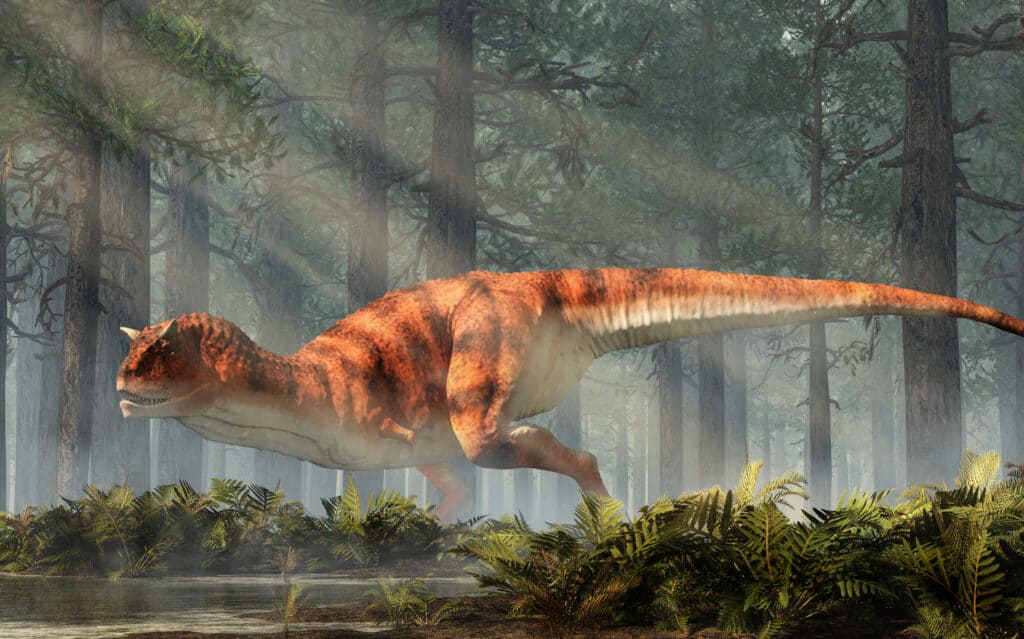
The Quilmesaurus likely lacked horns and had a more elongated skull than the Carnotaurus.
©Daniel Eskridge/Shutterstock.com
For a dinosaur name that starts with a Q, this one might have the most straightforward pronunciation. Quilmesaurus is a family of dinosaurs from the Late Cretaceous with relations to theropods. The fossils of this dinosaur (Quilmesaurus curriei) consist of part of the right femur and thighbone as well as a complete fossil of its right tibia. By these fossils, paleontologists could theorize its size and build at around 20 feet tall and over 1,000 pounds.
The dinosaur’s scientific name refers to a Canadian scientist who specializes in theropods, Dr. Philip Currie, and a group of native peoples, the Quilme.
The photo featured at the top of this post is © Orla/iStock via Getty Images
Thank you for reading! Have some feedback for us? Contact the AZ Animals editorial team.



